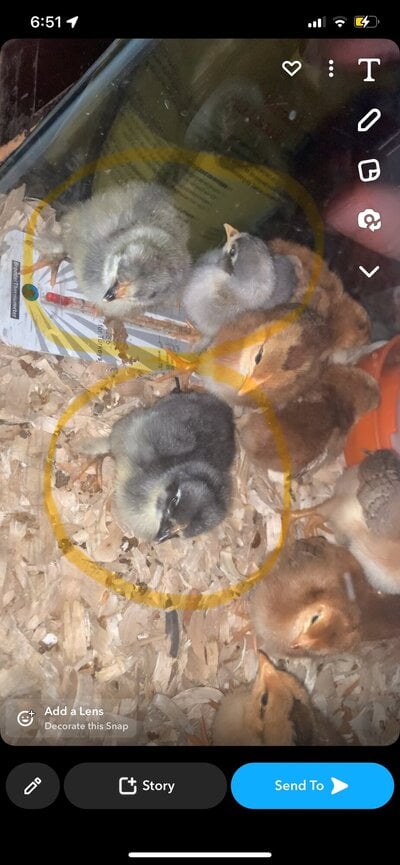So i just hatched three chicks from eggs i received from my neighbors and was wondering if anyone had any idea who the potential mothers could be in the chicks that were produced. All the chicks hatched from light brown/cream colored eggs. The possible parent breeds are as follow.
Rooster:
- Blue Bantam Cochin
- Red Bantam Cochin
Hens:
- Buff Orpington
- Lavender Orpington
- Golden Comet
- Rhode Island Reds
- Barred Plymouth Rock
Based on their coloration I’m assuming them to be the product of the Lavender Orpington and blue bantam cochin, though the darker more black chick I question. Their patterning seems very close to what i’ve seen of Blue cochin chicks and it is my understanding that the Blue color would likely be covered by the red pigment of the buff O, GC, and RIR. Is this accurate? In which case if the result of the BPR would the lack of head spot indicate all female? If needed i can provide a better angle.
Rooster:
- Blue Bantam Cochin
- Red Bantam Cochin
Hens:
- Buff Orpington
- Lavender Orpington
- Golden Comet
- Rhode Island Reds
- Barred Plymouth Rock
Based on their coloration I’m assuming them to be the product of the Lavender Orpington and blue bantam cochin, though the darker more black chick I question. Their patterning seems very close to what i’ve seen of Blue cochin chicks and it is my understanding that the Blue color would likely be covered by the red pigment of the buff O, GC, and RIR. Is this accurate? In which case if the result of the BPR would the lack of head spot indicate all female? If needed i can provide a better angle.





